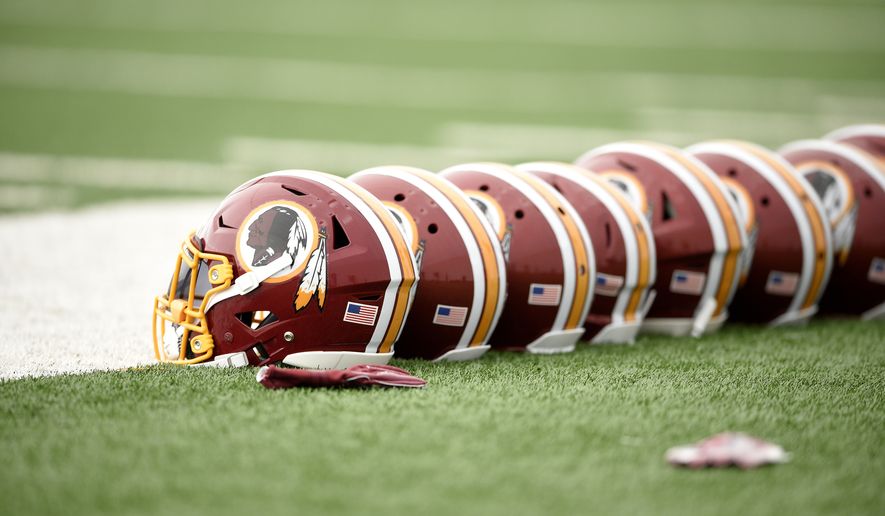Years of disappointment on the football field and controversy off it seem to have taken a toll on what was once considered the NFL’s most valuable franchise.
The Washington Redskins slipped to fifth in Forbes magazine’s annual ranking of the NFL’s most valuable franchises, stagnating at $3.1 billion, same as last year, while the value of other teams rose.
The Redskins were ranked fourth on the list last year.
The news comes the same week the team announced the end of its 50-year streak of sellout games, after 57,013 fans turned out for Redskins’ home opener at the 82,000-capacity FedEx Field on Sunday.
Like many NFL owners, Dan Snyder, who bought the team for $800 million in 1999, has profited enormously from the popularity and growth of the league over the last two decades. But the 2018 Forbes rankings continue a disconcerting trend for the Washington franchise, which was the magazine’s most valuable NFL team as recently as 2006.
Forbes’ methodology includes an element of subjectivity, considering revenue and operating income from the previous season and adjusting for things like upcoming stadium construction. Forbes pegs the Redskins’ revenue at $491 million and operating income at $122 million.
The Cowboys were Forbes’ highest-valued franchise for the 12th straight year at an untouchable $5 billion. The New England Patriots ($3.8 billion) and New York Giants ($3.3 billion) remained second and third, and the Los Angeles Rams leapt past Washington into fourth at $3.2 billion.
The Rams’ valuation doubled between 2015 and 2016 when they moved from St. Louis to Los Angeles, and has continued to rise every year since.
Depending on how much ticket revenue factors into the magazine’s calculation, the Redskins might be doomed to fall further. Not only did the team’s sellout streak end with Week 2’s home opener, announced attendance was well under FedEx Field’s capacity, with an estimated 20,000 seats going unfilled.
The Redskins did away with their long-standing season-ticket wait list this year and changed up the team’s marketing strategy, a move that coincided with the hiring of new chief operating officer Brian Lafemina. For many who follow the team, the decision to acknowledge the empty sections of seats at supposed “sellouts” in recent years seems like a step in the right direction.
“Admitting that the game is not sold out and being hungry for people to buy tickets and being more consumer-focused and not being arrogant like they’ve been in the past, is actually to me, at least in the short term, a good sign,” local sports talk host Kevin Sheehan said on his podcast last week.
However, many Washington fans contend the team’s problems go deeper than marketing campaigns and lackluster performances on the field, aiming their criticisms at the team’s aging facility itself and its off-the-beaten-path location in suburban Maryland.
FedEx Field is one of the 10 oldest stadiums in the NFL and rumors about when and where the Redskins might move have swirled for years.
In August, District Mayor Muriel Bowser expressed her interest in the franchise coming “home” and building a new stadium within city limits, but at least four Council members oppose the idea for reasons ranging from the projected stadium’s cost to the team’s nickname being considered, by some, as “an offensive racial slur.”
Virginia Gov. Ralph Northam and his predecessor in the office, Terry McAuliffe, both have said the Redskins should look to Northern Virginia as the site of the team’s next stadium.
A new home, depending on the financial details, would likely boost the franchise’s valuation. The Rams will begin playing in a new stadium in Inglewood, California, in 2020.
Many fans’ negative opinions of Mr. Snyder also come into play.
“Poor Redskins. Nobody likes the Redskins because of Dan Snyder,” sports fan Elizabeth Bradley said outside a recent Washington Capitals hockey game.
It’s not just fans, now. Deadspin reported Thursday that a group of FedEx Field beer vendors did not work Sunday’s game in protest of Mr. Snyder decreasing the sliding scale by which they are paid commission.
There’s also a debate about the overall popularity of football in 2018, between questions of player safety and the quasi-political divides that have sprung from players kneeling during the national anthem.
But TV ratings for the first two weeks of the NFL season are generally up.
⦁ Matthew Paras contributed to this story.
• Adam Zielonka can be reached at azielonka@washingtontimes.com.




Please read our comment policy before commenting.